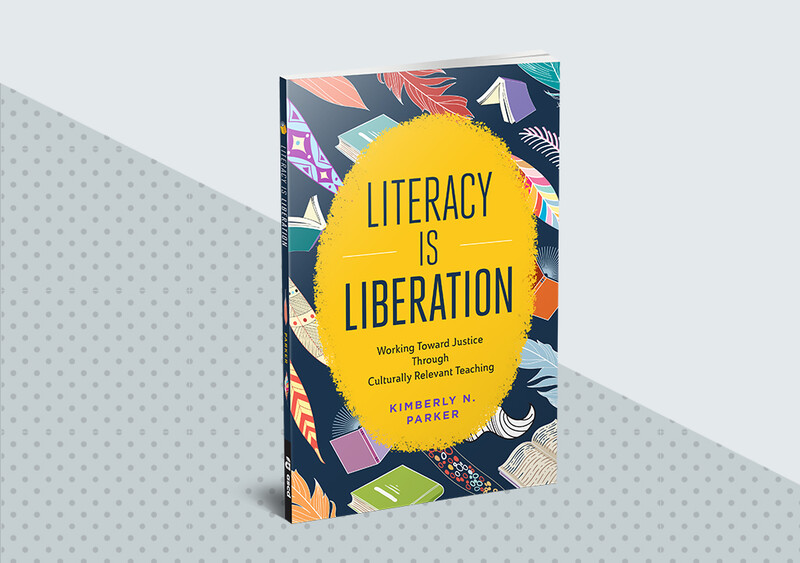Black, Indigenous, and Latiné students belong in STEM. Literacy educators—and all of us in a school building are literacy educators, by the way—can be on the forefront of preparing underrepresented students for STEM-related opportunities. I’m hoping that in our push for STEM education, we can center these brilliant young people by changing our literacy practices to respond to their needs. I recommend the following actions:
Expand the Canon to Center Diverse STEM Texts
Representation of experiences in the texts we teach and share with students matters. BIPOC readers need to see themselves meaningfully reflected in a range of texts and see who they might be, aspirationally. That includes texts in the science fiction genre (and its many subgenres) that involve an extensive look at scientific phenomena and STEM-related social problems. Teachers should realize, especially when it comes to STEM, the opportunities they present many students when they expand beyond canonical choices. They should understand how this expansion can impact a broad range of readers, since it will likely draw more students of color into a text.
As educator Tricia Ebarvia reminds us, “The choices a writer makes are not neutral but cultural, which means that when we teach certain texts, we are not just teaching the text, but the cultural values the text carries.” Consider several texts that regularly appear on syllabi for whole-class novel studies: Fahrenheit 451 by Ray Bradbury, Mary Shelley’s Frankenstein, Slaughterhouse Five by Kurt Vonnegut, The Handmaid’s Tale by Margaret Atwood, and Suzanne Collins’s The Hunger Games. In these often-taught texts, the worlds and characters presented are largely white, and discussions of plot and character tend to center whiteness. Let’s ask ourselves, Where will BIPOC children find their cultural values, especially about the future and their place within it, highlighted in school? What do we communicate when we teach only white-centered texts, even in a genre like science fiction?
BIPOC readers need to see themselves meaningfully reflected in a range of texts and see who they might be, aspirationally.
Instead of sticking to tradition, let’s seek out more diverse science fiction content. Octavia Butler wrote extensively about topics that are relevant now and will be in the future—climate change and social class, for example—all while centering Black protagonists. Tomi Adeyemi, Nnedi Okorafor, Jordan Ifueko, and Namina Forna are just a few of the many writers exploring the science fiction genre through their centering of Black characters and other characters of color, and settings and possibilities related to these BIPOC characters. Intentionally replacing classics with such contemporary, well-written, powerful texts will help BIPOC and other readers expand the possibilities they can imagine for how the world might transform in the future—and their roles within that world.
Have Students Do STEM-Centered Writing
Too often, we ask students to write for teachers as their audience, and to write in a prescribed way (five-paragraph essay, I’m looking at you). No wonder many students have negative feelings about writing. But often, students are doing writing beyond school that is expansive, mediated by their urges to wrestle with complex questions and ideas, often in response to or in collaboration with peers.
Now, when serious social issues related to science, math, engineering, and technology weigh heavily on many students’ minds, is a great time to ask students to think deeply about these issues—issues like AI, who has access to STEM opportunities, and how misuse of “big data” can lead to racial profiling. Asking students to generate coherent thoughts about STEM-related issues, come up with a solution for a problem tied to an issue, and consider who might need to hear about that problem and solution develops students’ sociopolitical awareness. It invites them to explore urgent, real-life problems and engage in authentic writing.
For instance, students might be introduced to Ruha Benjamin, a sociologist whose work focuses on the intersection of race, justice, and technology. Benjamin’s 2023 TED Talk “Is Technology Our Savior—Or Our Slayer?” provides robust opportunities for students to analyze her argument—that we should rely on collective imagination and intelligence to shape the future of technology. Students can decide how they might respond to Benjamin’s argument and who might be a good audience to share their response with. A rich writing workshop culture can support students’ writing processes and celebrate progress along the way as students become powerful composers about issues that matter to them and could impact us all.
Nurture Students’ Ability to Imagine the Future
Once I made Genius Hour a regular part of my 10th grade ELA classroom, I understood the importance of dedicating time for students to generate inquiry-driven questions and delve into topics related to those questions in a sustained manner. Genius Hour involves making time for students to pursue an individual project or learning of their choice, guided by their own interests and drawing on their existing knowledge and their curiosity. I held weekly Genius Hour class sessions in which students explored topics or problems of interest to them, worked with peers to propose solutions, and sometimes prototyped those solutions by creating a product or process. I found that the skills students used—of taking risks, solving problems, and persisting—were ones they needed in a range of disciplines, STEM included.
I found that the skills students used—of taking risks, solving problems, and persisting—were ones they needed in a range of disciplines, STEM included.
Genius Hour is an ideal way to help students do STEM-related work in ELA classrooms. Students can see and practice interdisciplinary skills characteristic of STEM work that are often overlooked. For instance, generating questions prompts critical thinking, which leads to research, which leads to writing various kinds of text based on that research. If students design a prototype as one solution to a problem they’re exploring, they can practice skills characteristic of design thinking, such as listening to and developing empathy for the target audience for that prototype.
If We Value Students . . .
If we value what students think, we must ensure that students, especially BIPOC students, not only learn STEM content, but are also invited to spend time envisioning possible answers to big questions that arise as they explore STEM issues. In that space of potential lies the greatest solutions. Let’s be intentional about giving our Black, Indigenous, and Latiné students such opportunities.
Literacy Is Liberation
When teachers put culturally relevant pedagogies into action, the literacy classroom can become a space for learners to explore diverse texts, collaboratively dismantle inequities, and let their spoken and written voices be heard.










